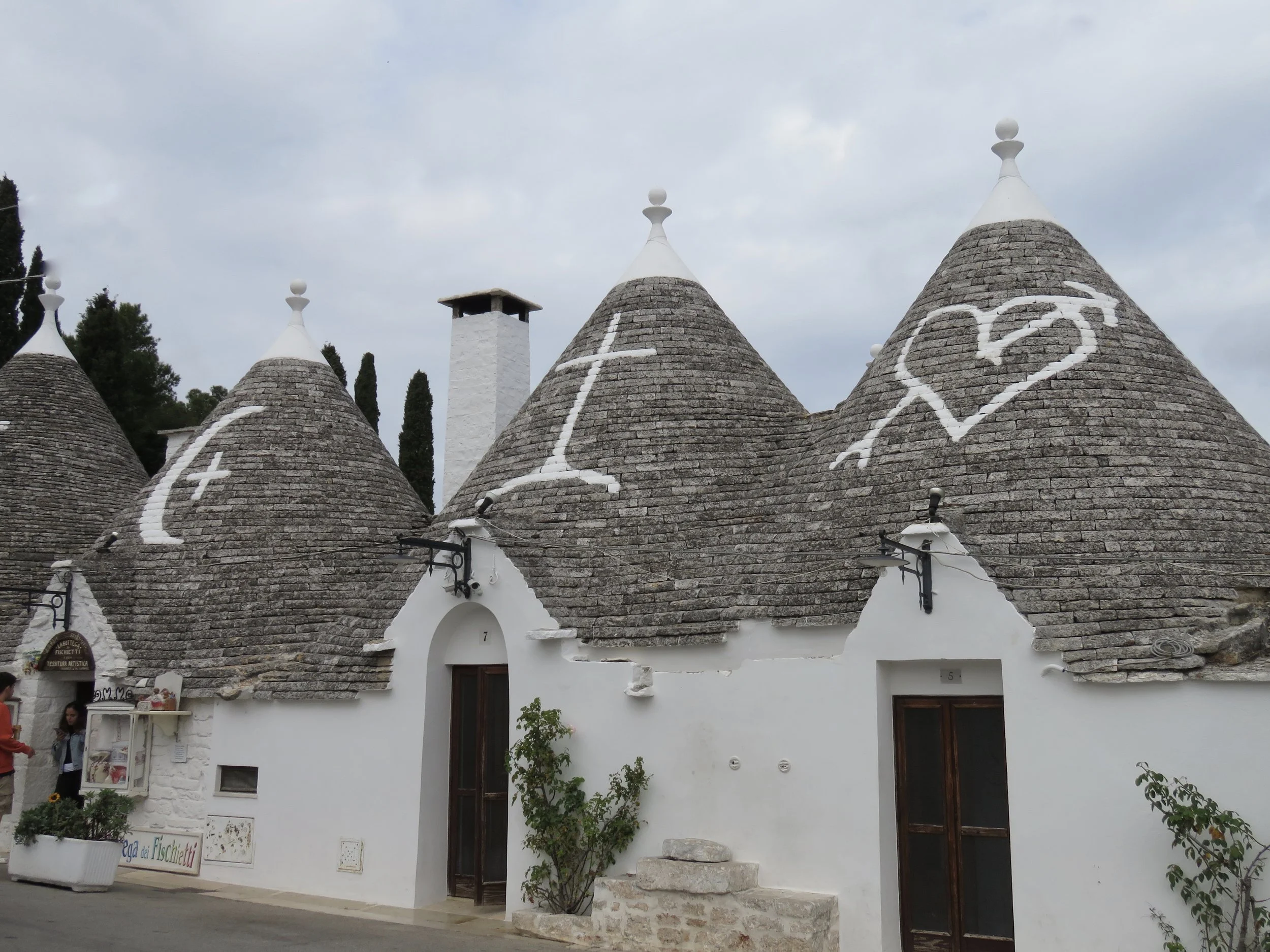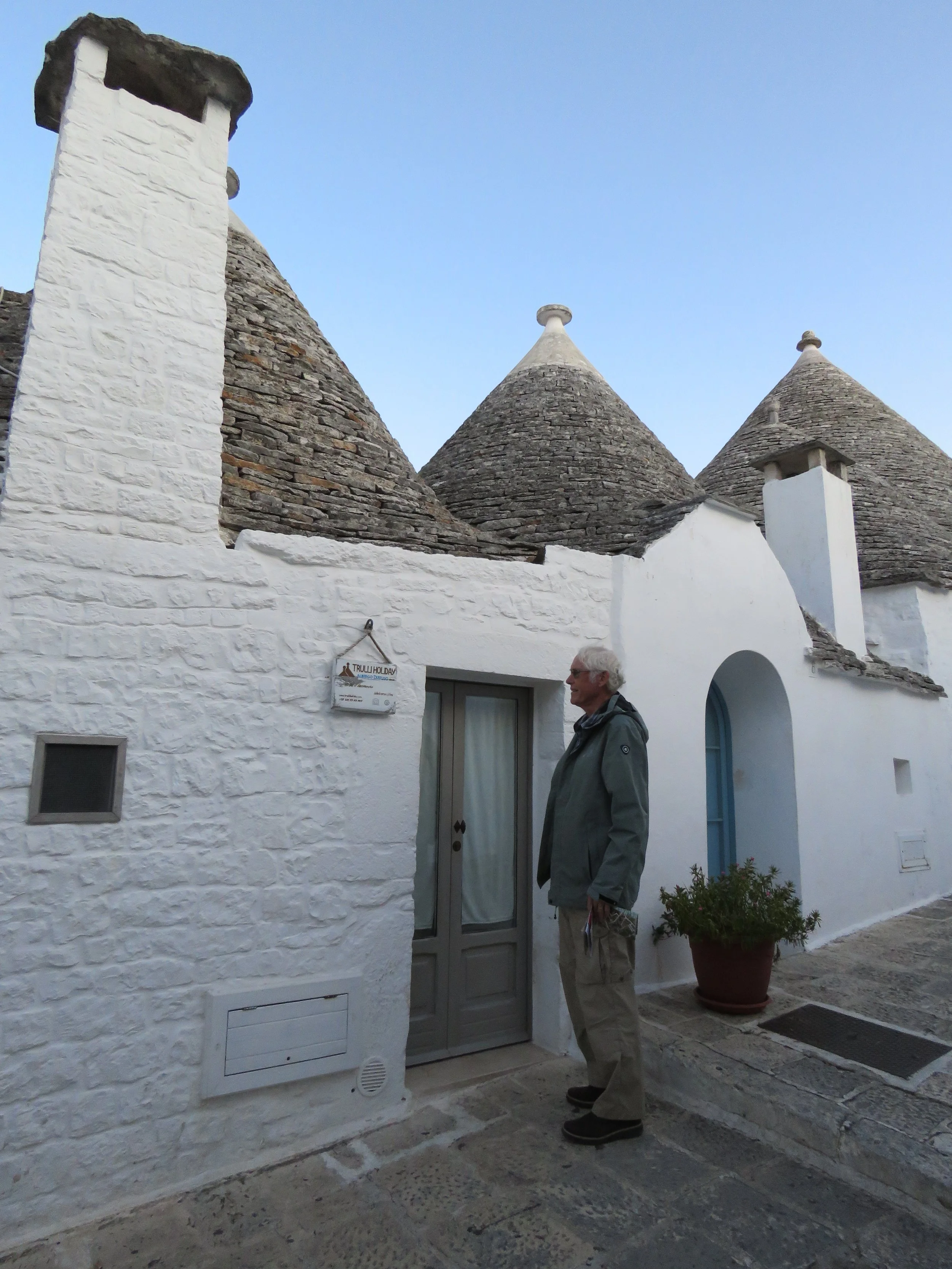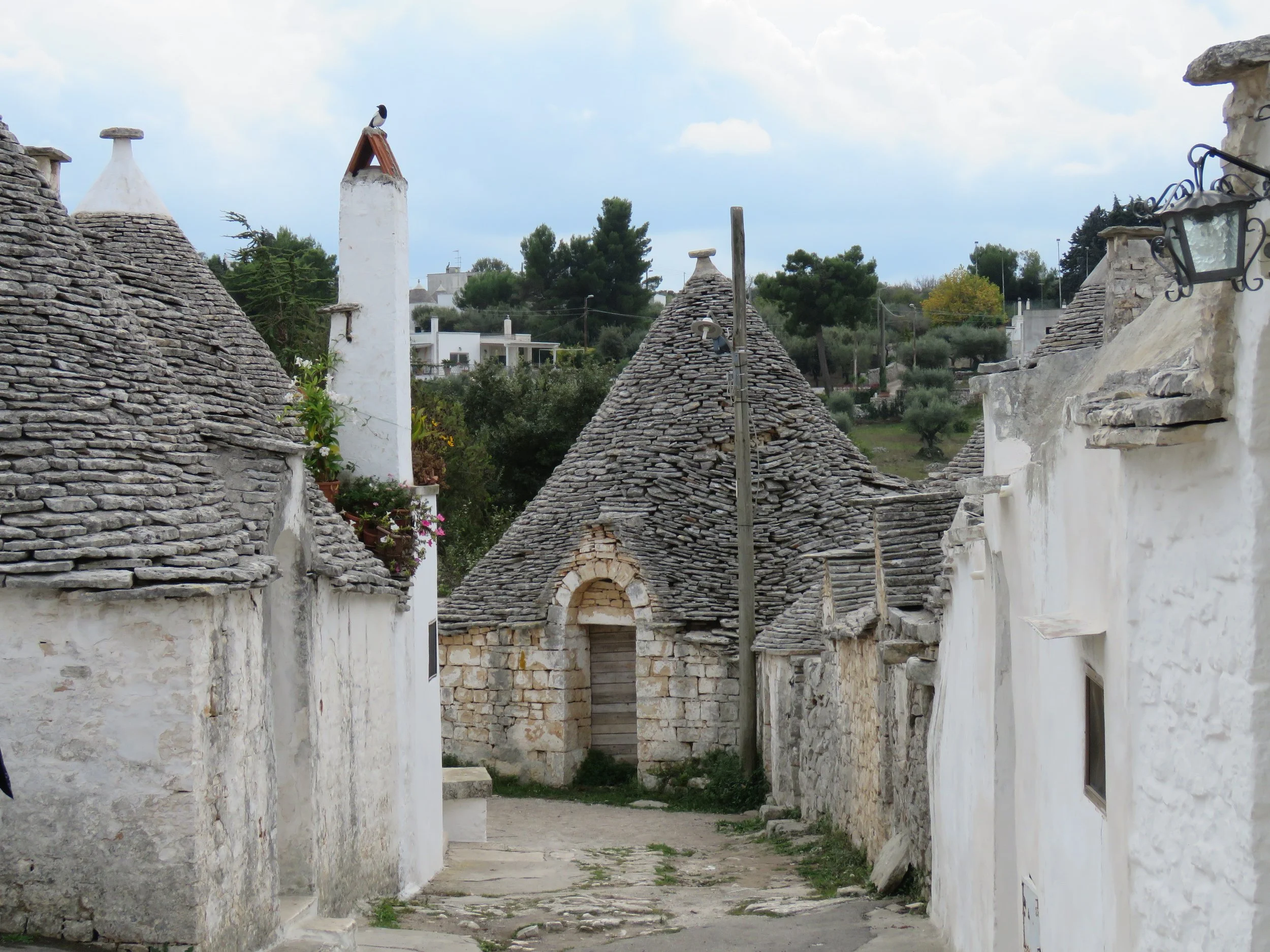Have you ever slept in a wind mill? Or in an igloo or a yurt?
Some types of dwellings are specific to only a small region on earth. When we were researching places to visit in Italy, I came across a photo on the internet that blew me away: unusually shaped houses with grey stone, domed roofs. They looked impressive and I studied the websites. It looked like Smurf ville! I loved the idea of seeing these amazing houses called trulli, or ‘trullo’ for a single dwelling. But the small region where these traditional homes occurred was in south east Italy, specifically the town of Alberobello, which was not on our itinerary.
Then an excited young woman, Italian but living in England, contacted me. She fell in love with my book Stepping Stones, wanted to translate it into Italian and “do something” with it. I did not know Marina then but I do now. And now I know that she is a force to be reckoned with and that she is full of brilliant ideas and passion for both books and for refugees.
Eventually Marina did translate the book and arranged for Stepping Stones to be published in Italian. And it would be launched in Bari while I was still in Italy. And Bari is very close to Alberobello! And so…
We took the train east, 4 hours across the foot of the boot, from Naples. Then an hour bus ride to Alberobello.
The first thing we notice is how clean other cities are after the garbage strewn streets of Naples. Shiny sidewalks, lovely green parks… And Alberobello exceeds all of my expectations.
Alberobello is close to Bari.
The historic centre of town has more than 1,000 trulli! Yes, it is a touristy place but the little house are truly historic (no pun intended). To the extent that no new trulli are allowed to be build.
Around the year 1,400 AD farm workers in this area needed homes. They simply used the local lime stone available, stacking them to build small, rectangular huts with domed roofs, much like the Inuit stack ice blocks in a circular fashion.
I find it amazing to see the rectangle stones turn into a round dome as they go up. The stones are simply piled on top of each other. Only later did they start using whitewash. While the name ‘trulli’ likely comes from the Greek, archeologists suspect that the origin shapes of the dwellings came from Mesopotamia. Apparently landowners paid taxes on permanent buildings. To avoid paying for farm workers’ housing, the trulli were stacked without cement so that they could be quickly disassembled. And to this day they are only stacked, not attached.
“Our” trullo
Our ‘hotel room’ in Alberobello is a small trulli in one of the areas with just narrow walkways connecting the homes, no traffic. Some are used as shops, others as pubs or restaurants. But all are restored, authentic dwellings. And some have not yet been restored. The ‘hotel’ has several trulli around town. For breakfast we walk to a restaurant on the town square with an extensive breakfast bar. We can make tea and coffee in our little house. It has been beautifully restored with a tasteful, almost Scandinavian decor: simple stone floors, a wooden ladder which holds clothes hangers, a simple wooden table. It all suits the environment of original farm workers homes.
We continued our journey across Italy to Bari, where we met the indomitable Marina who organized the launch of Stepping Stones for an audience that included refugees who had arrived in Bari from Turkey and beyond.
If you ever have a chance to visit the enchanted village with trulli, be sure to stop in Alberobello!
Resources:
Trulli: https://sites.google.com/site/trulliitaliano/unesco-world-heritage
Alberobello: http://www.costadeitrulli.org/en/region/alberobello-55/
Info on trulli: http://www.italia.it/en/discover-italy/apulia/poi/the-history-of-alberobellos-trulli.html
Unesco site: https://whc.unesco.org/en/list/787/
Our hotel: https://www.trulliholiday.com/en/
Trullo symbols: https://trullocicerone.com/2017/06/19/trullo-symbols/
BOOKS: scroll down to Italy









